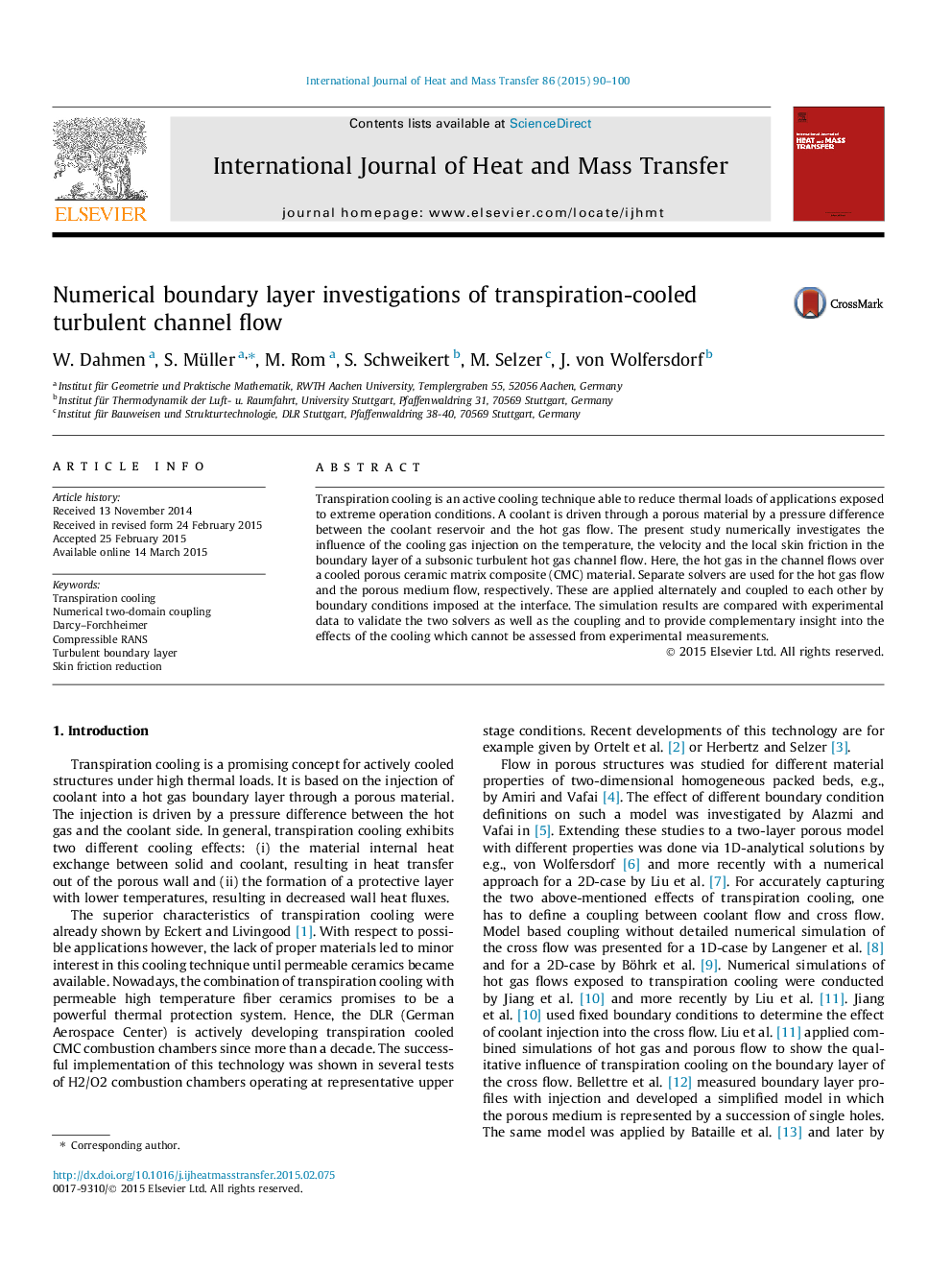| Article ID | Journal | Published Year | Pages | File Type |
|---|---|---|---|---|
| 656720 | International Journal of Heat and Mass Transfer | 2015 | 11 Pages |
Transpiration cooling is an active cooling technique able to reduce thermal loads of applications exposed to extreme operation conditions. A coolant is driven through a porous material by a pressure difference between the coolant reservoir and the hot gas flow. The present study numerically investigates the influence of the cooling gas injection on the temperature, the velocity and the local skin friction in the boundary layer of a subsonic turbulent hot gas channel flow. Here, the hot gas in the channel flows over a cooled porous ceramic matrix composite (CMC) material. Separate solvers are used for the hot gas flow and the porous medium flow, respectively. These are applied alternately and coupled to each other by boundary conditions imposed at the interface. The simulation results are compared with experimental data to validate the two solvers as well as the coupling and to provide complementary insight into the effects of the cooling which cannot be assessed from experimental measurements.
